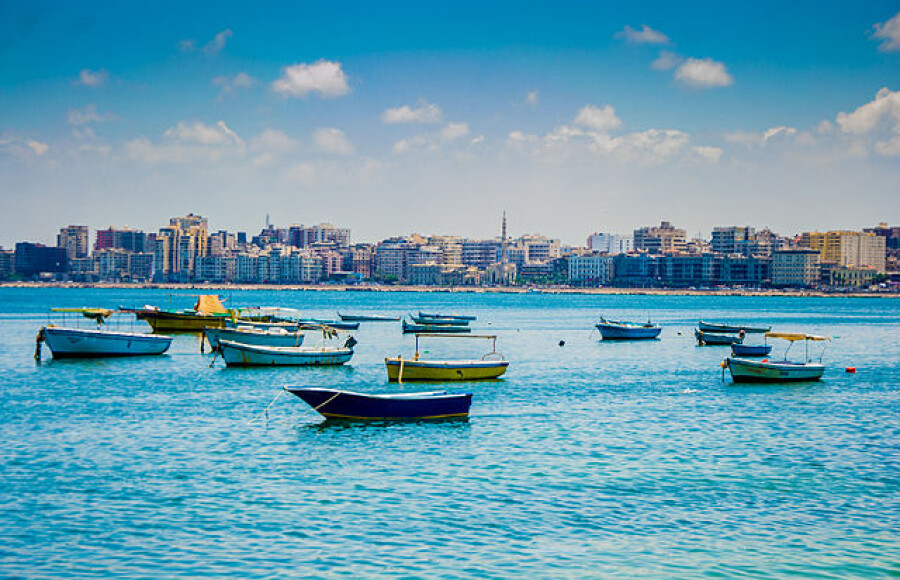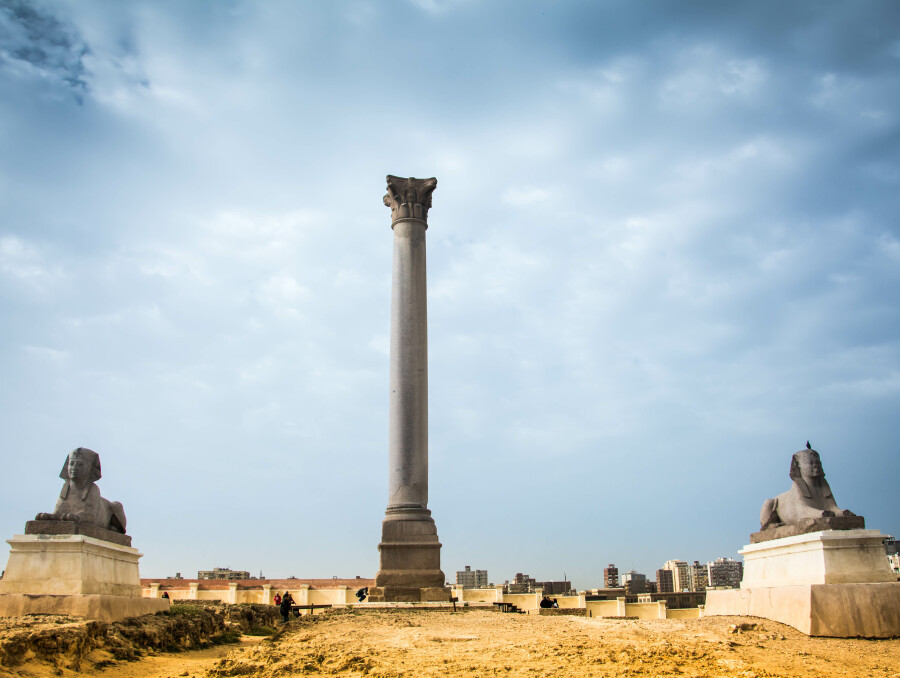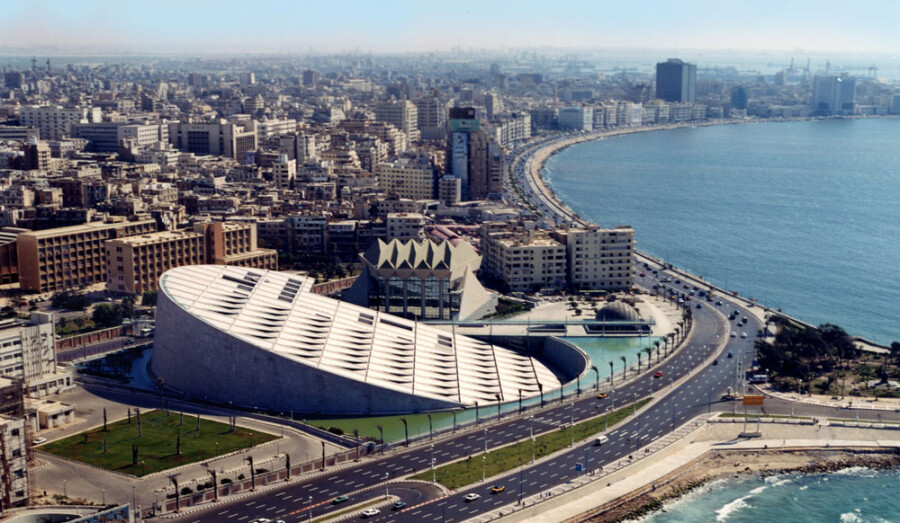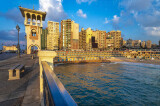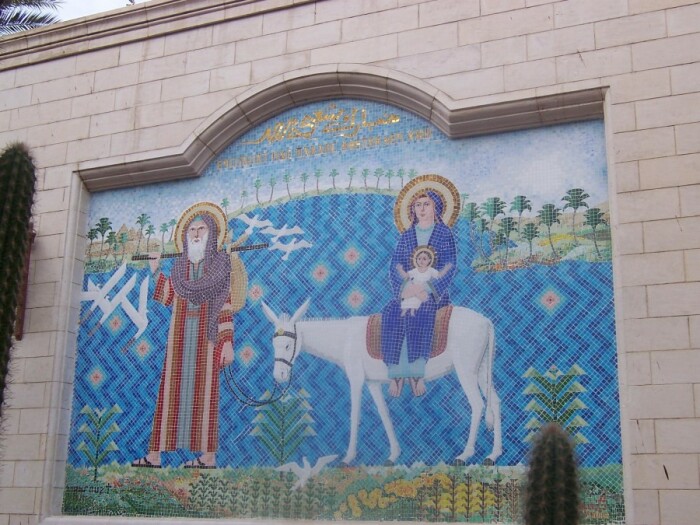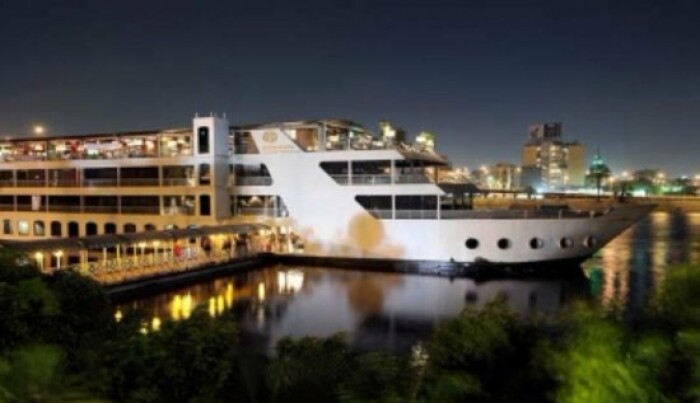Alexandria from Cairo
Alexandria And Cairo.
Excellent
5/5
Duration
12 Hours aprox.
Type
Private
Run
Everyday
Location
Alexandria And Cairo
Overview
Alexandria the second capital of Egypt located on the Mediterranean Sea, was founded by Alexander the Great in 332 B.C. by filling up part of the water which separates between Pharos Island and a small village called Rakotis. Alexander the Great was a Macedonian king, he was taught by the well-known philosopher Aristotle, and he dreamt of defeating the Persian Empire and establishes his own empire. Indeed, he achieved what he was looking for and controlled half of the world even before he reaches 30 years old Alexander was growing very fond of the Egyptian civilization, some said he traveled through deserts to counsel Amon god of the sun as ancient pharaohs assumed.
Alexandria city or as it's called “the bride of the white sea“ full of rare monuments, during this day tour you can visit beautiful sites including Kom El shoqafa catacomb, Pompey pillar, Alexandria New library and the citadel of Qaitbay from outside.
Alexandria city or as it's called “the bride of the white sea“ full of rare monuments, during this day tour you can visit beautiful sites including Kom El shoqafa catacomb, Pompey pillar, Alexandria New library and the citadel of Qaitbay from outside.
Itinerary
Day 1
After breakfast, our tour guide will accompany you in an air condition car taking the highway Cairo /Alexandria about 230 km there you visit.
Kom EL Shoqafa Catacomb
It was discovered in 1900 AD, completely. Dug in the rock, it dates back to the 1St century AD and was used until the 4the century AD. At first, it was a private tomb and then turned into a public one. It is the largest known Roman burial site in Egypt and one of the unique and most famous cemeteries in Alexandria, representing a model for the mixture between the Pharaonic and Greco-Roman art. It consists of three tiers of tombs that could accommodate up to 300 corpses. The architecture of the tombs reflects Greco-Roman styles. This can be seen in the wall decoration, which shows the combination of Egyptian, Greek, and Roman artistic traditions. People are buried here in sarcophagi, in shelves, and in urns of ashes after cremation.
Pompey’ Pillar
which reaches around 27 meters, it was constructed to commemorate the Roman emperor Diocletian in the third century and considered the highest cenotaph of the world, near beside the column there are two small statues similar to sphinx made of pink granite and belong to Ptolemy VI
You also visit the Citadel of Qaitbay located at the entrance of the eastern harbor on the eastern point of Pharos Island. It was erected on the exact site of the famous Lighthouse of Alexandria (destroyed in the 14th century), which was one of the Seven Wonders of the Ancient World. The citadel was built by sultan Ashraf Qaitbay in 1477 A D who wanted to protect Alexandria city from the Ottoman Empire direct threats it is considered one of the most important defensive strongholds, not only in Egypt but also along the Mediterranean Sea coast. It formulated an important part of the fortification system of Alexandria in the 15th century A.D. After lunch in a local restaurant, we visit Alexandria Library
Alexandria New Library
The actual construction began in 1994 and completed in 2002 with $200 million budgets, it comprises around 120 manuscripts and rare scrolls. Today, the library receives about 800, 00 visitors annually with a main target to be an academy of dialogue and rationality the library consisted of four underground stores and six upper stores. The architectural design was chosen by the UNESCO the competition was won by a Norwegian architectural office, from among more than 1000 competitors and it is supposed to be constructed in the same place of the original building of the famous library completely burnt in the 7th century, that was one of the largest and most significant libraries of the ancient world. Designed in the reign of Ptolemy I Soter, and built during the reign of his son Ptolemy II Philadelphus. the library acquired about400,000 papyrus scrolls and had presented knowledge and science for the whole world during more than 10 centuries until it was completely burnt in the 7th century. Both the ancient bibliotheca and the new library share the same heritage and knowledge.
After this trip, you will be transferred to your hotel.
Kom EL Shoqafa Catacomb
It was discovered in 1900 AD, completely. Dug in the rock, it dates back to the 1St century AD and was used until the 4the century AD. At first, it was a private tomb and then turned into a public one. It is the largest known Roman burial site in Egypt and one of the unique and most famous cemeteries in Alexandria, representing a model for the mixture between the Pharaonic and Greco-Roman art. It consists of three tiers of tombs that could accommodate up to 300 corpses. The architecture of the tombs reflects Greco-Roman styles. This can be seen in the wall decoration, which shows the combination of Egyptian, Greek, and Roman artistic traditions. People are buried here in sarcophagi, in shelves, and in urns of ashes after cremation.
Pompey’ Pillar
which reaches around 27 meters, it was constructed to commemorate the Roman emperor Diocletian in the third century and considered the highest cenotaph of the world, near beside the column there are two small statues similar to sphinx made of pink granite and belong to Ptolemy VI
You also visit the Citadel of Qaitbay located at the entrance of the eastern harbor on the eastern point of Pharos Island. It was erected on the exact site of the famous Lighthouse of Alexandria (destroyed in the 14th century), which was one of the Seven Wonders of the Ancient World. The citadel was built by sultan Ashraf Qaitbay in 1477 A D who wanted to protect Alexandria city from the Ottoman Empire direct threats it is considered one of the most important defensive strongholds, not only in Egypt but also along the Mediterranean Sea coast. It formulated an important part of the fortification system of Alexandria in the 15th century A.D. After lunch in a local restaurant, we visit Alexandria Library
Alexandria New Library
The actual construction began in 1994 and completed in 2002 with $200 million budgets, it comprises around 120 manuscripts and rare scrolls. Today, the library receives about 800, 00 visitors annually with a main target to be an academy of dialogue and rationality the library consisted of four underground stores and six upper stores. The architectural design was chosen by the UNESCO the competition was won by a Norwegian architectural office, from among more than 1000 competitors and it is supposed to be constructed in the same place of the original building of the famous library completely burnt in the 7th century, that was one of the largest and most significant libraries of the ancient world. Designed in the reign of Ptolemy I Soter, and built during the reign of his son Ptolemy II Philadelphus. the library acquired about400,000 papyrus scrolls and had presented knowledge and science for the whole world during more than 10 centuries until it was completely burnt in the 7th century. Both the ancient bibliotheca and the new library share the same heritage and knowledge.
After this trip, you will be transferred to your hotel.
Included/Excluded
- English-speaking tour guide during your excursions.
- Transfers in private vehicle with air conditioning.
- 1 Bottled Mineral Water.
- 1 Day Tour.
- Main Entrance Fees.
- This itinerary could be changed in order according to the circumstances of service not to be canceled.
- Lunch at a local restaurant.
- Tourism Police Permission.
- Tax.
- Transfers in private vehicle with air conditioning.
- 1 Bottled Mineral Water.
- 1 Day Tour.
- Main Entrance Fees.
- This itinerary could be changed in order according to the circumstances of service not to be canceled.
- Lunch at a local restaurant.
- Tourism Police Permission.
- Tax.
- Accommodation.
- Personal spending.
- Any Beverages.
- Tipping.
- Anything not mentioned above.
- Personal spending.
- Any Beverages.
- Tipping.
- Anything not mentioned above.

